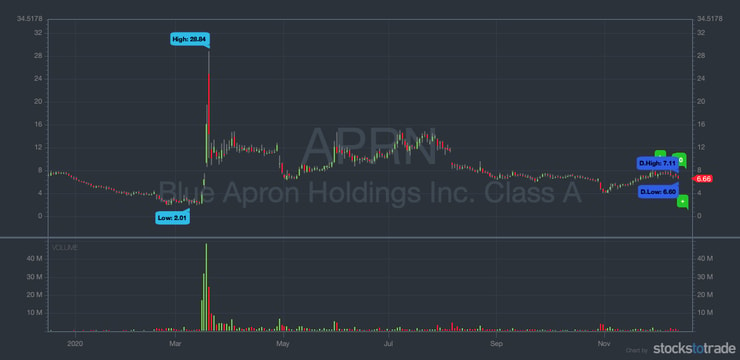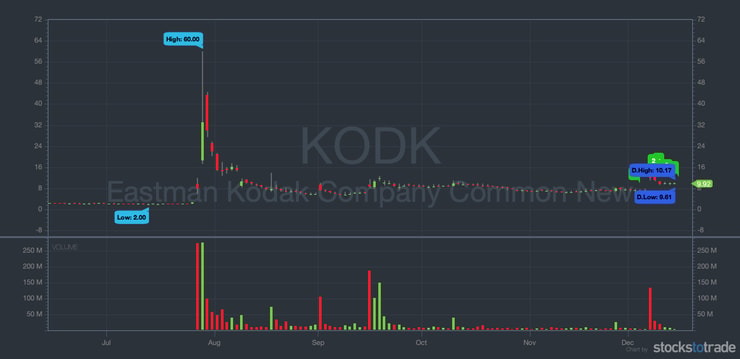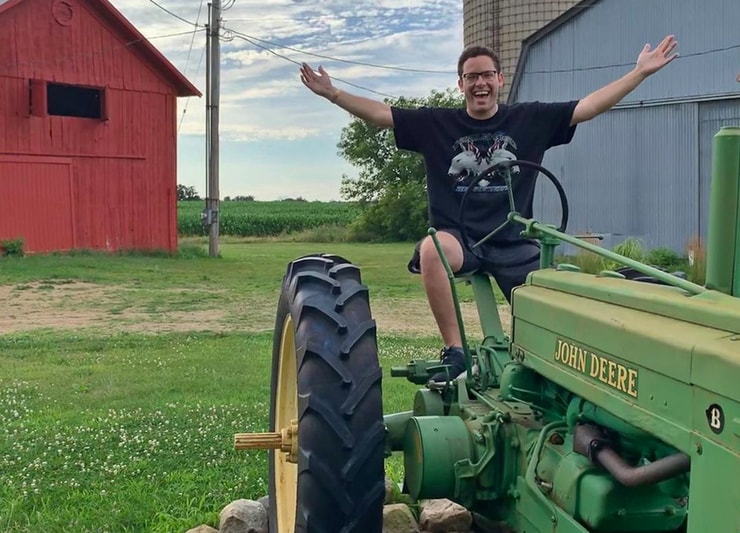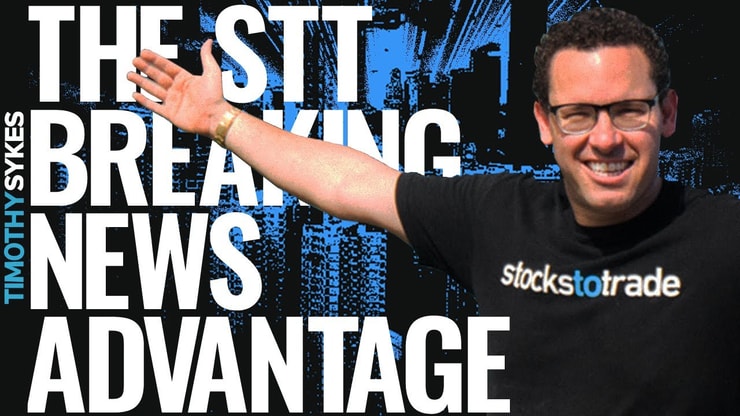Learning how to spot common stock catalyst examples — and knowing how catalysts can move stocks — is crucial to your everyday trading.
Stock catalysts have the potential to drastically move a stock’s price. Traders rely on stock catalysts so they can get in on the big moves.
But stock catalysts don’t have the same effect every time. Sometimes they can move a stock big time, and sometimes nothing happens. It’s important to learn as much as you can about the stock market so you can understand why that is.
In this post, I’ll go over the most common stock catalyst examples so you can better prepare to catch big moves. And I’ll go over where to find stock catalysts…
Table of Contents
- 1 What Is a Stock Catalyst?
- 2 Examples of Stock Catalysts
- 2.1 Stock Catalyst Examples: #1 Global Pandemic
- 2.2 Stock Catalyst Examples: #2 Government Regulations
- 2.3 Stock Catalyst Examples: #3 Product Launches
- 2.4 Stock Catalyst Examples: #4 Lawsuits and Investigations
- 2.5 Stock Catalyst Examples: #5 Earnings Season
- 2.6 Stock Catalyst Examples: #6 Clinical Trials and FDA Approvals
- 3 Upcoming Stock Catalysts: How Can You Identify Them?
- 4 How Can a Trader Benefit From a Stock Catalyst?
- 5 Conclusion
What Is a Stock Catalyst?
A stock catalyst is any piece of information that can influence a stock’s price. It can pertain to a company, a sector, or the overall market.
In science, a catalyst is something that increases the rate of reaction for a substance. Stock catalysts work similarly. They can cause a surge in volume, which often leads to a breakout.
In the stock market, there are hard catalysts and soft catalysts. When an event directly affects a company, that’s a hard catalyst. When there’s an indirect relationship to the company, it’s called a soft catalyst.
Stock catalysts today can make a stock surge or plummet, depending on whether the news is good or bad for the company.
Examples of Stock Catalysts

Stock catalysts examples include product launches, FDA approvals, lawsuits, government regulations, earnings … any number of things.
Traders who study common stock catalysts can be better prepared for upcoming stock catalysts — and potential price action.
Let’s go over some stock catalyst examples…
Stock Catalyst Examples: #1 Global Pandemic
Is this a common stock catalyst example? Let’s hope not. But since it caused so much mania in the markets, it’s worth mentioning. The 2020 pandemic caused some INSANE moves.
When the pandemic first hit, we saw the overall market plummet. And then a penny stock company would put out a press release saying it would start producing masks, and the stock would double or triple in a single day.
There was also a big surge in food delivery stocks, like Blue Apron, which benefited from the lockdown and stay-at-home orders.
Here’s Blue Apron’s one-year chart…

Check out the huge spike the stock had because of the shutdown. Those are the types of catalysts that day traders look for.
I trade this niche because even if the overall market’s plummeting, penny stocks don’t care. And they continue to follow predictable patterns.
Stock Catalyst Examples: #2 Government Regulations
Government regulations usually affect whole sectors, not just individual stocks.
Think about weed stocks and how they spiked after some states legalized marijuana.
Government regulations can have positive or negative impacts on different sectors, depending on the news. Keep up with the general news so you can be prepared and react to what’s happening in the markets. Don’t think you can bend the market to your will.
More Breaking News
- SEALSQ Shares Experience Noteworthy Decline: What Does This Mean for Investors?
- VerifyMe’s Stock Surge: Analyzing the Record-Breaking Performance
- Expion360 Inc Instability: CFO Resignation and Market Impact
Stock Catalyst Examples: #3 Product Launches
Product launches are great because they’re company-specific.
Product launches can have a big effect on an individual stock — unlike things like government regulations or pandemic news, which can move entire sectors.
When you think of a product launch, you might think of a new smartphone being announced. This is exactly the kind of thing to watch for with these catalysts.
Stock Catalyst Examples: #4 Lawsuits and Investigations
Lawsuits and investigations are stock catalyst examples that can drag a stock’s price down.
Lots of traders will sell their shares when there’s news of a lawsuit or investigation involving a company. A good example of this happened this year with Eastman Kodak, a global company involved in printing and imaging.
Check out Kodak’s six-month chart…

You can see that on July 28, Kodak had insane volume, and the stock started spiking. There were a few green days in a row before it started to fall. It fell hard and fast after the announcement of a class-action lawsuit against the company.
This is a great example of why I always expect the worst with every penny stock company. That way I’m never disappointed when there’s a negative catalyst or the stock fails. Aim for singles and move on to the next.
Stock Catalyst Examples: #5 Earnings Season
We must mention earnings season when we’re talking about stock catalyst examples. Earnings season comes around four times a year, typically in January, April, July, and October.
The quarterly earnings season is one of the most important times for a trader. Pay close attention to the market, because earnings winners can have huge upsides.
But note that stocks aren’t earnings winners just when they beat analysts’ estimates … There’s more to it. Earnings winners occur when the market reacts well to the earnings, whether the company beat the estimates or not.
One of the most important things I teach: Don’t play guessing games. If you want to play guessing games, you might as well go to Vegas and find a casino.
I didn’t make over $6 million in trading profits because I’m a good guesser.* I put countless hours into studying predictable patterns and the market. And I make a trading plan for every trade.
Your chances of being a self-sufficient trader are zero if you only buy stocks based on gut instincts.
(*These results are not typical. Individual results will vary. Most traders lose money. My top students and I have the benefit of many years of hard work and dedication. Trading is inherently risky. Always do your due diligence and never risk more than you can afford to lose.)
Stock Catalyst Examples: #6 Clinical Trials and FDA Approvals
Biotech companies will announce the results of a clinical trial or FDA approval of a treatment. These catalysts can cause huge moves.
Once again, don’t play guessing games. Like earnings, clinical trials and FDA approvals can be positive or negative catalysts. If you happened to be invested in a biotech company that had negative news from a clinical trial, your account might blow up.
Instead of playing guessing games, react to the news. If the news is good, weigh your risk/reward, and trade it if you like the setup.
Check out my 30-Day Bootcamp to learn about risk/reward, patterns, how to find a strategy that works for you, and much more.
Upcoming Stock Catalysts: How Can You Identify Them?

One of the hardest things about stock catalysts is identifying them. So how can you find news that actually matters?
The best way to find upcoming stock catalysts is to use a stock catalyst screener. I use StocksToTrade every day because it specifically helps me find momentum in penny stocks.
And the StocksToTrade Breaking News Chat feature is awesome. Two former Wall Street pros scan through penny stock news to find the most promising items with the potential to move a stock’s price. It helps make searching for news catalysts so much easier. If you use it, you don’t have to sift through all the garbage press releases. The two guys that run it do that for you.
Check it out for yourself … Sign up for a 14-day trial of Breaking News Chat and StocksToTrade for $17.
(Full disclosure: I helped develop StocksToTrade and I’m a major investor.)
How Can a Trader Benefit From a Stock Catalyst?
When traders are prepared, they can potentially capitalize. Without preparation, they won’t succeed.
So start with the stock catalyst examples I listed for you in this article. Start tracking them and see how they can move stocks. That preparation can help you benefit from stock catalysts and help you spot the hot sector.
Finding the hot sector in this niche is crucial. Hot sectors constantly change, but there’s so much potential upside with hot-sector stocks…
That’s because the hot sector gets the most volume. And volume brings volatility, which is what we want as day traders.
I’ve found success in this niche because I prepare for catalysts.* The StocksToTrade Breaking News feature helps me prepare too, but I’m ultimately the one who executes the trades.
In my Trading Challenge, I help traders learn the best ways to prepare themselves for what the stock market brings. Who knows what the stock market will bring in 2021? Not me. All I know is that if you don’t study, you won’t get anywhere. If you’re willing to put in the time and dedication, you’re already ahead of the game.
Apply for my Trading Challenge if you’re willing to put in the time and dedication…
Conclusion

There are lots of different examples of stock catalysts. Study as many stock catalyst examples as you can so you’ll be prepared to recognize one.
There are tons of resources out there to help you find the best catalysts and use them to your advantage. For example, StocksToTrade’s Breaking News Chat can help save you time. And it can potentially help you find even better setups because you have two pros helping with the heavy lifting.

And if you’re serious about trading, apply for my Trading Challenge so you can learn how to execute trades on stocks when you see catalysts.
How have these stock catalyst examples helped you? What are your favorite stock catalysts? Let me know in the comments…





Leave a reply